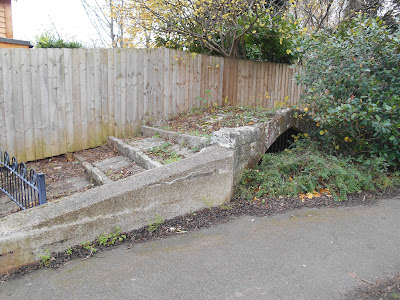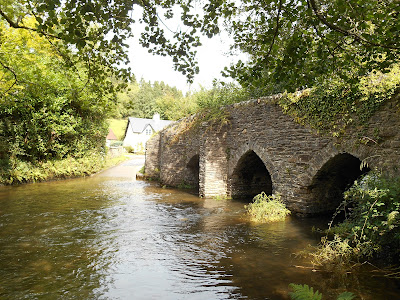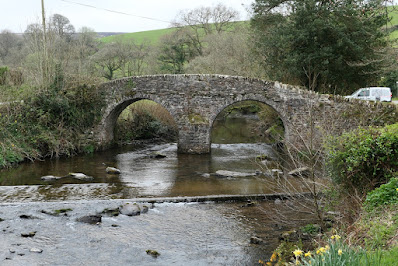Packhorse bridges were built so that horses and ponies carrying loads could cross rivers and streams. Most were built before c1800 and are just wide enough for one laden horse to pass over them. Many of them were originally cobbled and they often have low parapets, so that they didn't interfere with the panniers carried by the horses. Somerset has about 30 surviving examples, many of them on Exmoor because the bulk of goods were carried by packhorses in upland areas.
Gallox Bridge, Dunster - over the River Avill
This bridge possibly dates back to the 15th century
Allerford - over the River Aller
Allerford's medieval packhorse bridge
Hacketty Bridge, Horner - over the Horner Water
This bridge possibly dates back to the late medieval period
Hacketty Way Bridge, Horner
West Luccombe - over the Horner Water
This bridge was built in the late medieval period
West Luccombe
Ramshorn Bridge, Taunton
The Galmington Stream has been diverted and no longer flows under this bridge.
Bow Bridge, Bruton - over the River Brue
Bow Bridge, Bruton
Kentsford Farm, Watchet - over the Washford River
Robber's Bridge - over the Weir Water
Bury Bridge - over the River Haddeo
Bury Bridge and Ford
Medieval four-arched bridge
Malmsmead Packhorse Bridge and Ford over the Badgworthy Water
This bridge was built in the 17th century
Smithy Bridge, Winsford - over the Winn Brook
This single arch packhorse bridge dates back to the medieval period and was restored in 1952.
Packhorse bridge next to Vicarage Bridge, Winsford
This two-arched bridge is probably medieval in origin. It was rebuilt in 1952 following flood damage.
Packhorse bridge next to Vicarage Bridge, Winsford
Edbrooke Packhorse Bridge over the River Exe near Winsford
This bridge is probably medieval in origin but was rebuilt in the 18th century. The road to Winsford passed over the bridge until the new turnpike road was cut in 1824
Edbrooke Bridge
Packhorse bridge at Marsh Bridge Cross
This packhorse bridge was built sometime before 1838.
Marshbridge Cross Packhorse Bridge
Cannington Packhorse Bridge over the Cannington Brook
Cannington Packhorse Bridge
Wellow Packhorse BridgeThis was built across the Wellow Brook in the late medieval period but has been restored and altered since then.
Bolter's Bridge
Bolter's Bridge
Bolter's Bridge, which spans the River Alham, is located half a mile south east of the hamlet of Hornblotton. It is on the border between the parishes of Ditcheat and West Bradley. It was reputedly built in the medieval period by the Abbots of Glastonbury to join two parts of the moor and to make a road from Castle Cary to Glastonbury. It has 4 arches and no parapets.
Grid reference: ST 606 334.
Dowlish Wake
This packhorse bridge was built in the 17th or 18th century using the local Moolham stone from an earlier (14th or 15th century) bridge. The arches on the right and left hand sides were inserted in 1997, as part of a flood relief scheme.




































